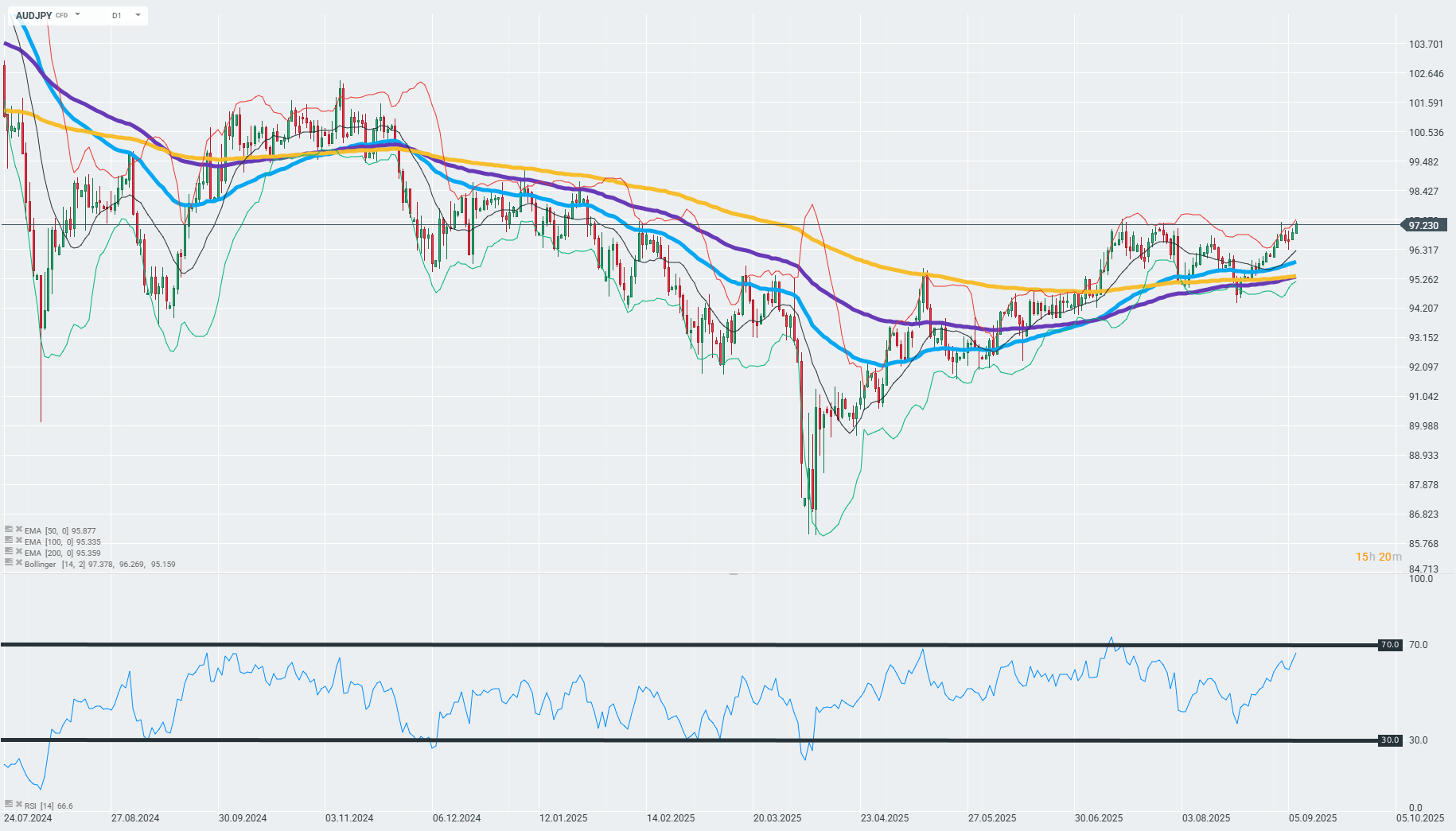Chart of The Day – AUD/JPY
Japanese Prime Minister Shigeru Ishiba announced his resignation after his party’s historic defeat in the July parliamentary elections, less than a year after taking office. Ishiba, who had gained a reputation as an independent centrist, had long tried to fend off pressure mainly from the right wing of the party, stressing that he wanted to avoid a political vacuum at a very challenging time for the country. His decision was also linked to concerns about the loss of unity within the Liberal Democratic Party, which under his leadership lost its majority in both houses of parliament for the first time in 15 years, and the party vote could in practice mean a vote of no confidence for him. Ishiba decided to launch the procedure for selecting a new party leader and does not intend to run in the upcoming vote himself. He pointed out that the fundamental reason for his resignation was also the final success in negotiations with the US – the customs agreement was to reduce US tariffs on Japanese cars and other export goods from 25% to 15%, and the prime minister wanted to conclude the talks before stepping down.
Ishiba’s term coincided with a turbulent period of social tensions and rising living costs in Japan, and these issues were key during the elections – the government and the coalition lost support, particularly among voters demanding clear anti-inflationary policies. Public opinion polls showed that the pressure to resign paradoxically strengthened support for the prime minister himself, but ultimately, pressure within the party proved decisive. Against a backdrop of political and market uncertainty, Ishiba called for a quick leadership election to avoid a protracted dispute and enable genuine change. The main candidates to succeed him include Shinjiro Koizumi, Sanae Takaichi, and Yoshimasa Hayashi. Over the coming weeks, the new leader will have to seek compromises with the opposition in order to effectively implement economic measures and stabilize the political system.
Analysts emphasize that the prospect of electing a new LDP leader in October increases investor uncertainty, and the Bank of Japan’s policy is likely to remain conservative until the situation stabilizes.
What is more, new economic data confirmed the positive trend – Japan’s GDP in the second quarter was revised upwards and amounted to as much as 2.2% year-on-year, clearly exceeding earlier estimates of 1%. The growth is mainly driven by strong private consumption and a rebound in exports, despite the negative impact of tariffs on Japanese goods in the US. This was the fifth consecutive quarter of growth, which gives hope that the momentum will be maintained despite external threats such as US tariffs and political instability resulting from Ishiba’s resignation as prime minister.
The AUDJPY pair is clearly gaining today, which is due to both the relative strength of commodity currencies and the aforementioned collapse of the yen in response to political changes. Looking at the chart, we can see that the pair is close to local highs, which halted the wave of growth in July this year. The technical uptrend is still intact, and the aforementioned peaks may constitute a fairly significant resistance barrier for the pair. The RSI indicator for the last 14 days remains close to the 70-point zone, the highest since July this year, which shows that the recent increases are relatively faster than usual compared to the past.

Source: xStation
The material on this page does not constitute financial advice and does not take into account your level of understanding, investment objectives, financial situation or any other specific needs. All information provided, including opinions, market research, mathematical results and technical analyzes published on the Website or transmitted To you by other means, it is provided for information purposes only and should in no way be construed as an offer or solicitation for a transaction in any financial instrument, nor should the information provided be construed as advice of a legal or financial nature on which any investment decisions you make should be based exclusively To your level of understanding, investment objectives, financial situation, or other specific needs, any decision to act on the information published on the Website or sent to you by other means is entirely at your own risk if you In doubt or unsure about your understanding of a particular product, instrument, service or transaction, you should seek professional or legal advice before trading. Investing in CFDs carries a high level of risk, as they are leveraged products and have small movements Often the market can result in much larger movements in the value of your investment, and this can work against you or in your favor. Please ensure you fully understand the risks involved, taking into account investments objectives and level of experience, before trading and, if necessary, seek independent advice.




